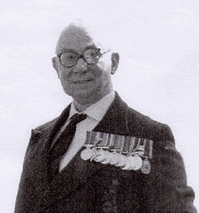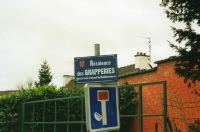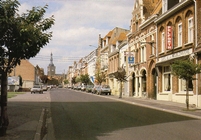



The Parish Church of St George the Martyr, Waterlooville

Easter Edition 2014
Diaries of a First World War Buglar
To mark the 100th anniversary of the outbreak of World War I, we are serialising the diaries of Bugler John McCormack of “A” Company, 9th Battalion, County of London, Queen Victoria’s Rifle. John McCormack is Eileen Oades Uncle and Rosemary Monk’s Great Uncle.
NOVEMBER 4th 1914
We left Southampton by boat, destination unknown, at 7.30 p.m. and after a splendid crossing, although wet, we arrived at Le Havre at 12 noon amid heaps of welcome from the inhabitants of the Port, on a splendid Autumn day. Marched from here to the Rest Camp making our first appearance on the rotten cobble stones of France. Stopped at Rest Camp after a trying march with full pack, blanket and rifle, for one night and were off again next morning en route for Le Havre station, which was also a trying march on the cobble stones, and after traversing some of the principal streets in the town, we arrived at station fully exhausted on November 6th. Stopped here for about 3 hours and eventually entrained in French troop trains, and after a monotonous ride of 24 hours, we arrived at St. Omer on November 7th on a rather dark night.
From here we marched to a small village called Arques and took up our billet in a bottle factory but my Company, ‘A’, was in a school. Here we spent a considerable time, still training and having sometimes very long route marches on the good old cobbles, and occasional rifle practice with ball cartridge. It was during one of these visits that our Machine Gun Officer shot himself with his revolver. However, about this time, November 15th, we heard the sad news of Lord Roberts death and on November 17th we had the honour of attending his funeral. The day was icy cold, we were the only buglers there and we were drawn up outside the “Mairie” and had the further honour of sounding the “Last Post” in front of Lord Kitchener, General French, H.R.H. the Prince of Wales and many distinguished men. Our buglers were congratulated by General French on behalf of all present. The body was taken away amidst a very weird and pathetic flourish played by the trumpets of the French Cavalry.
NOVEMBER 19th 1914.
We packed up and marched to Hazebrouk being greeted on the way by a very severe snowstorm which gave a lot of us bad colds. My billet here was that of a slaughter house where I watched with interest several animals being put to death. Anyway, we didn't have a long spell here. I visited the town and several Estaminets and took particular notice of the Bandstand which stood in the middle of the square which I thought had seen plenty of good old times. The place itself was very pretty and fully stocked with heavy British transport and the recent snowstorm helped to beautify the spectacle. We left here the following morning en route for Bailleul, all the way we could hear the booming of guns and, after marching through these splendidly treed roads we arrived on November 20th and were sent to our billet which was the “Grapperies” recently occupied by Germans on their retreat from Calais.
I could not help noticing what massive vineyards the place possessed, I sampled some of the grapes, they were the best I had ever tasted. 7d per lb. Here we stayed till November 27th enjoying the time immensely in the town. In the afternoon of the same day we set out for Neuve Eglise a small village a few miles away, quite a pretty one, it looked as if it had had a few German shells over. Splendid church here with a graveyard in front. Had a fairly good time here during a short stay, was billeted in an Estaminet.
On November 29th 1914 we received orders for the trenches and after drawing our food, Bully and Biscuits, we set off for our first sample of the “Great War”.
We arrived in the fighting line about 8 o'clock. Two of our platoons went on to the first trench and my platoon, No.1, with the remainder stayed in dug-
DECEMBER 9th 1914.
We went up again to relieve the Manchester Regiment of the 14th Brigade. The trenches were awful, a proper death trap, what a state! Couldn’t move, and up to our waists in mud. What a night!, pouring with rain all the time from above and the Germans firing at us from the side, Southend not in it! We were relieved by the Cheshires on December 11th, who by the way were 8 hours late owing to a heavy bombardment. During the same downpour of rain we started off on the most trying march I have ever experienced, right back to Bailleul which was a distance of 13 miles. After a good sleep I got myself clean again. Then came the order to hold ourselves in reserve as the French were making a determined attack at La Basse. Fortunately we were not required. On December 16th we were up again to relieve the K.O.S.B. We had to spend 3 days up this time in very rough weather, the German trenches were barely 40 yards in front of us and it was murder to pop your head up. We lost 2 or 3 men in this manner. Our three days being up we started for “HOME” again. In going back we had to pass through a village called Lindenhook which was absolutely in ruins, the spire of the church was knocked over at right angles, one more shell and it’s off. I might add the majority of the men were suffering from rheumatism so we had plenty of jocular groans on the march back. Our next visit to the trenches was on December 22nd, occupying the same trenches again. How cold! ugh!. Leaving the trenches we set out for St Jans Cappei which is just outside Bailleul, about 14 miles march, I shall never forget it, for just as we had been relieved we got “spotted” and a murderous fire was concentrated on us. I was the last man having had to come from 10 yards in front of the enemies’ trench where I had been to the listening post. There was a one plank bridge to cross and it was here that a spent bullet hit my foot, bringing me down to my knees but with the exception of tearing a lump out of my boot, I was alright. This, I might mention, happened on Christmas Eve. Well, to proceed, we started off on our 14 miles march. Everybody was about beat when Sergeant Fisher started singing carols and then we pulled ourselves together and eventually reached our destination at 2 o’clock Christmas morning. I awoke Christmas morning after a good sleep on straw in about the cleanest barn I have struck out here. It was an ideal morning, bitter cold with snow on the ground and the sun shining.
We stayed at this place for 6 days during which time we indulged in football and running. One evening we had a concert. I enjoyed it immensely. On 29th December we left Bailleul again for Neuve Eglise and on 31st we again went into the trenches. This being New Year’s Eve, at 12-
Next night to the trenches again and relieved the K.O.S.B. January 6th -
To be continued



Modern day sign for “The Grapperies”
Modern day Bailleul